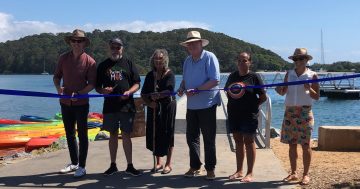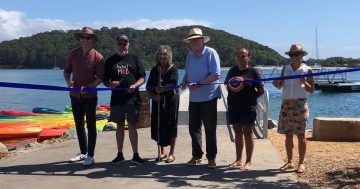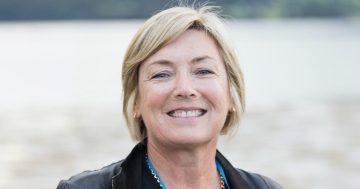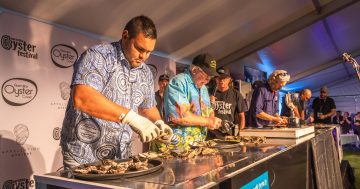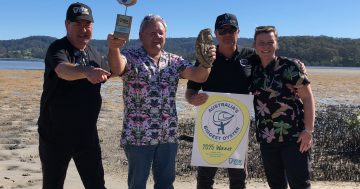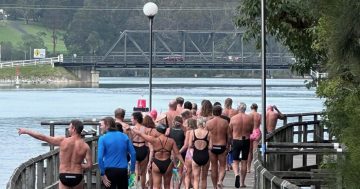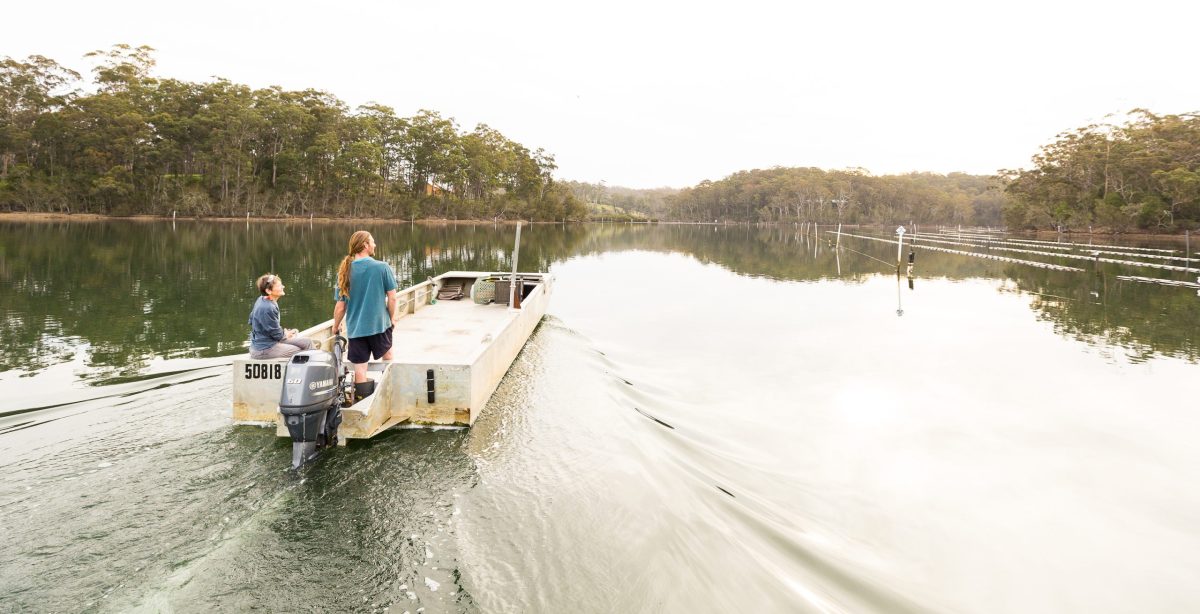
Damon Fernihough is passionate about oysters and their environment. Photo: Eurobodalla Coast Tourism.
Oyster farmer Damon Fernihough is passionate about oysters and the marine ecosystems in which they grow. He is proud of growing oysters in a sustainable way so that a vulnerable seagrass species thrives, and volunteering many hours for a conservation project to bring the native angasi oyster back from the brink of extinction.
His knowledge about southeast marine environments makes it difficult to believe the self-described country boy from Kempsey only moved to Narooma from Perth eight years ago.
“My parents were thinking of moving here and were looking at houses and we ended up buying an oyster farm,” Mr Fernihough said.
They have invested much time and money turning what was a non-functioning entity into a profitable business.
It reached the point that it was time to either spend more time and money taking Out of the Blue Oysters to its next growth phase or stepping out while the timing was good. The constant manual labour was starting to catch up with his parents.
Mr Fernihough is staying on to help the new owners take over running the renamed farm, Narooma Oysters.
He got plenty of good advice when he started oyster farming. The piece that has kept Mr Fernihough as calm as the waters of Wagonga Inlet is what an old-timer oyster farmer told him. “If you are worried about having oysters die or being pinched, you aren’t growing enough oysters.”
“Ever since I took that advice, I have stopped worrying,” Mr Fernihough said. “Oysters are a benefit to the environment they exist in, so there’s no downside to having more oysters.”
Despite the risk of extreme weather, for the most part, the oysters will still be there in the end. Weather may close the inlet temporarily but when the inlet reopens the oysters will be there, growing plump and delicious.
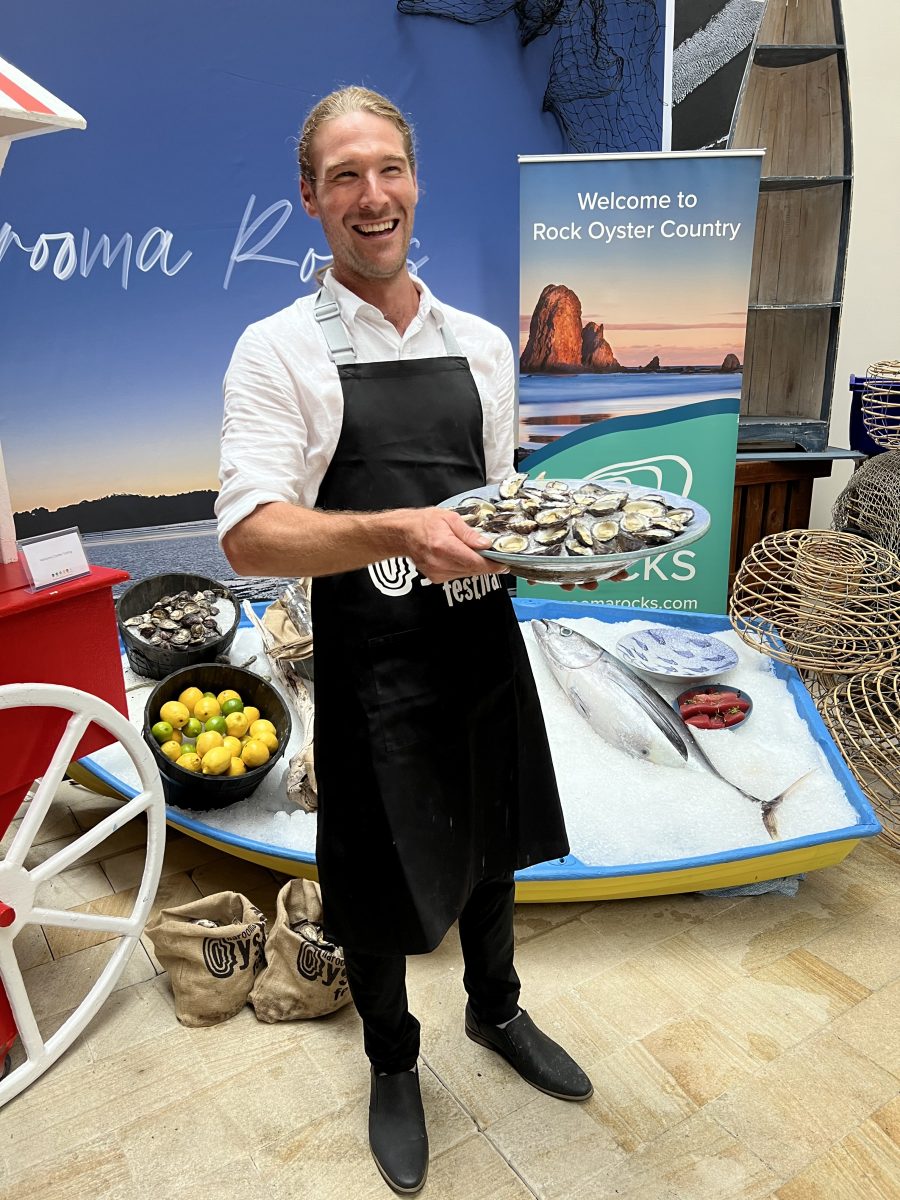
Meet other inspiring oyster farmers like Damon Fernihough at Oyster Farmers Alley at the Narooma Oyster Festival on Saturday 3 May. Photo: Narooma Rocks.
It takes oysters three to four years to grow to the size at which they can be harvested. At one point the family did not have enough oysters and needed another income stream. That was when Mr Fernihough spotted a gap in the market and started doing oyster tours on his punt.
It was a win-win, as the tours were very well received, and Mr Fernihough enjoyed taking people out on the inlet and talking about their sustainable farming practices.
Seagrass is very important habitat for marine life. However, several species are threatened, including Posidonia australis.
“It is very much threatened elsewhere but Narooma is one of the few places with extensive seagrass meadows,” Mr Fernihough said.
“We have been proud of seeing how the seagrass has stayed consistently healthy and a lot of the work we did encouraged it to start growing again,” he said. “We are really proud that Narooma is such a healthy environment, one of the strongholds.”
Such is his passion for Narooma’s healthy marine environment that he went above and beyond to create the angasi oyster reef that is part of the award-winning Wagonga Inlet Living Shoreline project.
He was approached by James Caffery of Nature Coast Marine Group Eurobodalla and Jillian Keating of NSW Department of Primary Industries (Fisheries).
“They reached out to us. They wanted some involvement from the oyster farms to collect the dead oyster shells rather than take them to the tip,” he said.
They set up a group to collect the shells. Volunteers then came to the Fernihough’s shed to clean and bag the shells. A team of specialists artificially seeded them at the project site.
Mr Fernihough said the native angasi oysters were over-harvested for years and were more vulnerable to “bottom dragging”, meaning people could collect an entire reef’s worth in one harvest.
“At this point I believe they are classed as functionally extinct, so it was a unique opportunity to be involved in a project bringing an organism back from the brink of extinction. I happened to be in a unique position to get involved and help, so I jumped at the opportunity.”
The conservation project was designed to use natural solutions to fix coastal erosion, and to encourage the installation of infrastructure, such as the popular new jetty, intertwined with elements such as oyster reefs that are beneficial to the environment.
To meet inspiring oyster farmers like Mr Fernihough, take a stroll down Oyster Farmers Alley at the Narooma Oyster Festival on Saturday 3 May, or take a road trip of oyster farm gates to taste the merroir of South Coast estuaries.







